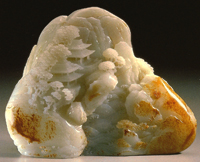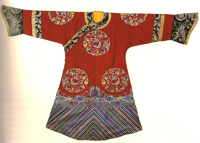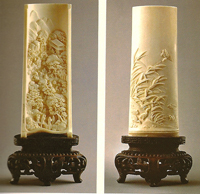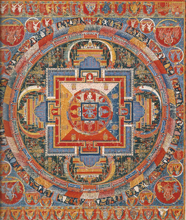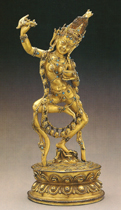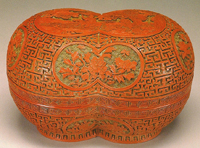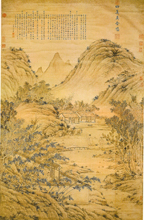How to Evaluate Chinese Fine Art
The quality of valuation is based on a carefully designed scope of work for appraisal, your knowledge of Chinese visual culture and your professional integrity as an art consultant and appraiser. If you wish to learn how to appraise Chinese painting and calligraphy, I would recommend that you consider the following suggestions.
- Identification: An accurate identification of a Chinese painting and calligraphy is the basis for a credible appraisal. A set of questions you need to ask yourself includes: who is the artist? Does it have the artist's signature and name seal? Is the painting inscribed by third parties? Any information provided by the painting needs to be verified via a careful study of the artist's biography, original signature styles and the style of his name seals. No matter how good a forger is, he always left behind some clues for a knowledgeable appraiser to detect them.
- Inspection: A careful study of the physical features of a Chinese painting and calligraphy forms the foundation for a objective assessment of the quality of the work in question. Aspects to be covered include medium (paper or silk), mounting style (date of material and methods adopted), analysis of brushstrokes (the signature style of the signed artist and his artistic affiliations), and the visual appeal (iconography, composition of forms and colors). This step will allow you to land on an objective understanding of the rank of the property in the artistic career of the signed artist. If it is less authentic, you will have a vrery good sense of how close the subject property to the originals, such as by a strong and capable hand or a weak hand of less sophistication. It is the appraiser's job to catch the original spirit of the subject property in the light of what you know about the artist and his personal preferences in painting.
- Ranking: It is important for an art specialist not to trust your gut but evidence. As an art professional, we are obligated to be objective while try to restain ourselves to utter less thoughtful opinions without proper ranking. To be objective, we need to rank artist (master, 1st, 2nd, 3rd ranks by assessing their standing among their equals) and rank the work (masterpiece, desirable, collectible and decorative). We need to stick to our ranking criteria prior to researching for qualified comparables.
- Value Reconciliation: Similarities and differences shared by or separating the subject property from its equals need to be weighed with care. A famous artist may produce works of lower quality, a good fake may carry value. Particular attention needs to be given to the possibilities of "twins" or "triplets" relevant to the work in question. In other words, in the Chinese material cultures, many painters were exhausted by the frequest requests from others for gifts, thus, duplicating paintings or authenticate a student's works are the basic methos adopted by a lot of Chinese painters.
What Determines the Value of a Chinese Painting
-
Authenticity: Originality is the most important value feature. However, as far as Chinese art is concerned, sometimes, the value of a fine reproduction of an original work by a good old hand may exceed the value of an original new work by a less capable hand.
-
Date of Creation: Date is crucial if a Chinese painting is identified as antique piece, namely prior to 1900. The earlier, the more valuable. However, for works of the 20th century on, date of creation is less crucial.
-
Rank of Artist: Ranking the signed artist among his equals determines the value of his works: However, a famous artist does not always produce masterpieces. A fine Chinese art work by a less known artist does not mean less valuable.
-
Quality: No doublt, quality is the most important value indicator. A fine Chinese painting and calligraphy is judged by its ranking in subject matter, iconography, technique and visual appeal. A low-quality work by a famous artist carries modest value.
-
Subject Matter: This is another important value indicator. In Chinese fine arts, landscape painting ranks higher than figure painting, figure painting ranks higher than flower and bird. The visual appeal of a painting plays a role in the marketability of the work.
-
Size: The impact of size on value is determined by the rank of an artist and his artistic strength. A masterpiece can be of a very modest size. Size seems to play an important role in some auction houses. A larger-sized art work does not mean a higher value. The value of a fine Chinese painting and calligraphy is judged by its quality, the rank of its artist and the desirability of the works by the artist in question.
-
Medium: The medium of a Chinese fine art affects value. In assessing the value of a traditional Chinese paintings prior to 18th century, for example, those painted on silk is more desirable than those on paper, since painting on silk is more difficult than painting on paper.
-
Mounting Style: Either hand scroll, hanging scroll, album, or panels, etc, the mounting style of a Chinese fine art affects value very modestly. In terms of the aesthetic value, a good Chinese painting and calligraphy is not considered completed unless it is mounted in a suitable style for presentation. In the current market, a hanging scroll is better appreciated than a hand scroll. A handscroll performs better than a fan painting. A painting mounted on the decorative satin is more desirable than that on a plain paper.
-
Condition: This is one of the most important value feaature considered in the valuation. Any retouch on the pictorial surface or physical conditions (water stain or mildew, crack, etc) diminish the value of the work and also affects its marketability.
-
Rarity: The rarer the more desirable. Buy rarity and quality is the best investment strategy.
We Consult & Appraise Asian Art
